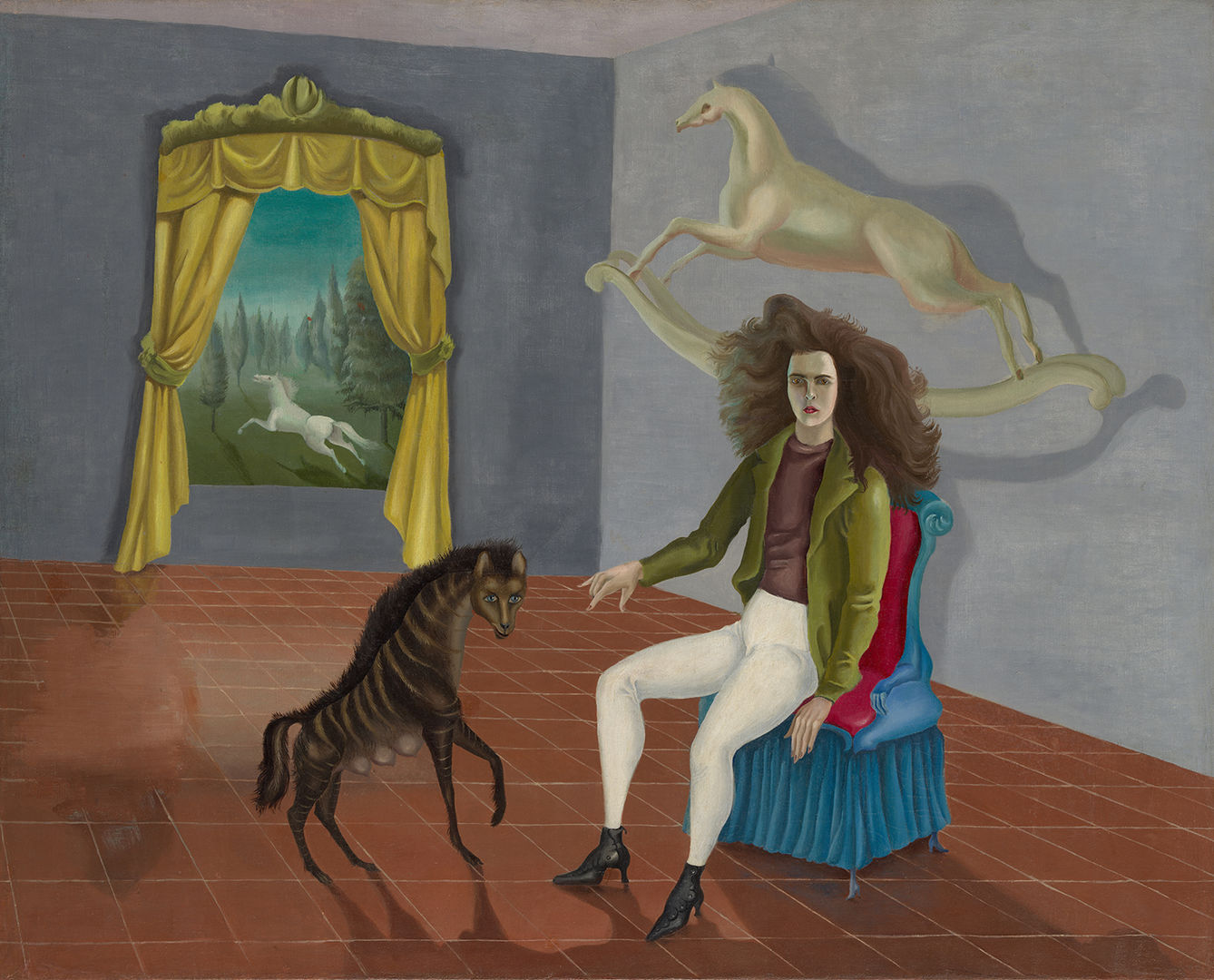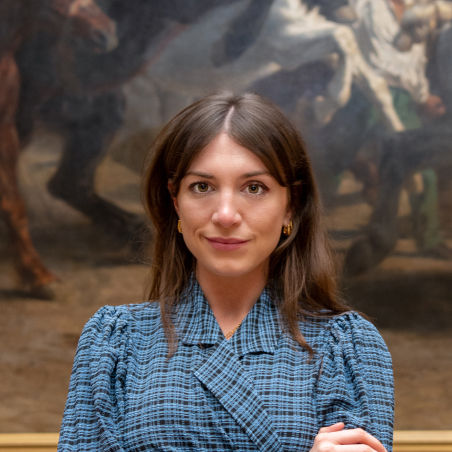“I didn’t have time to be anyone’s muse,” Leonora Carrington once said. “I was too busy rebelling against my family and learning to be an artist.”
While viewing Carrington’s famous self-portrait, Katy Hessel rethinks the role of muses and reflects on the gap between how artists represent themselves and the narratives that eclipse their identities.
Listen to the conversation, or read the full transcript below.
Transcript
KATY HESSEL (Voiceover): In The Met’s Modern and Contemporary Wing, there’s a small self-portrait of a woman with wild hair. This woman is surrealist artist Leonora Carrington. And when I saw this incredible work in person, I was astonished.

Leonora Carrington (Mexican [born England], 1917–2011). Self-Portrait, ca. 1937–38. Oil on canvas, 25 5/8 x 32 in. (65 x 81.3 cm). The Metropolitan Museum of Art, New York, The Pierre and Maria-Gaetana Matisse Collection, 2002 (2002.456.1). Image © 2021 Artists Rights Society (ARS), New York
HESSEL: Ah… amazing!
I’ve seen it reproduced so many times. But actually when you see it in The Met Museum, somehow it comes alive more than you’ve ever imagined before.
We see this woman, her hair almost looks like it’s got a sort of electric shock or something. She’s wearing these white jodhpurs. It’s quite preppy. And these two horses, one of which is a flying rocking horse with a shadow—looking quite ominous. And the other is breaking free, it’s alive. It’s not a rocking horse. It’s not wooden. It’s set free into the distance.
Leonora Carrington is just an artist who I’ve always, her work has always resonated with me so much. And it’s because she had this rebellious, free spirit. She had such an extraordinary life. She grew up in this quite strict, sort of upper-middle-class household where she was destined to just be a debutante and essentially be married off to a wealthy man.
But she did the exact opposite of that. She ran away to London, and then to Paris, then she went to Spain and then New York, then Mexico City. And she was young at this time. She was twenty years old when she made her Self-Portrait. And she’d just run away.
HESSEL (Voiceover): For a long time, rather than being known as an artist in her own right, Leonora Carrington was widely known as Max Ernst’s muse. Max Ernst was one of the most well-known artists from the surrealist movement of the early twentieth century.
HESSEL: And I always get so frustrated when I go to exhibitions and I look at the wall text and they say, “Oh, Leonora Carrington, her lover was Max Ernst.” Well, she was also so much more than that. And should women be considered muses? Yes, that might be an element of what they do. They might be a subject, which is an exciting, interesting aspect of their career. But also they were artists first and foremost.
And actually, I love this quote… So when Whitney Chadwick, who’s a formidable, brilliant feminist art historian, asked artist Leonora Carrington for her thoughts on the surrealist muse, she replied, “I thought it was bullshit. I didn’t have time to be anyone’s muse. I was too busy rebelling against my family and learning to be an artist.”
HESSEL (Voiceover): Listen on to hear more incredible stories about women artists at The Met.
###
This audio tour is one in a series of tours called Museums Without Men produced by Katy Hessel in collaboration with institutions across the globe, such as the Fine Arts Museum San Francisco, the Hepworth Wakefield, the Hirshhorn Museum and Sculpture Garden, and Tate Britain. The series encourages museum visitors to seek out work by great women and gender non-conforming artists in these institutions who, simply by virtue of their gender, were often overlooked and underrepresented.





















